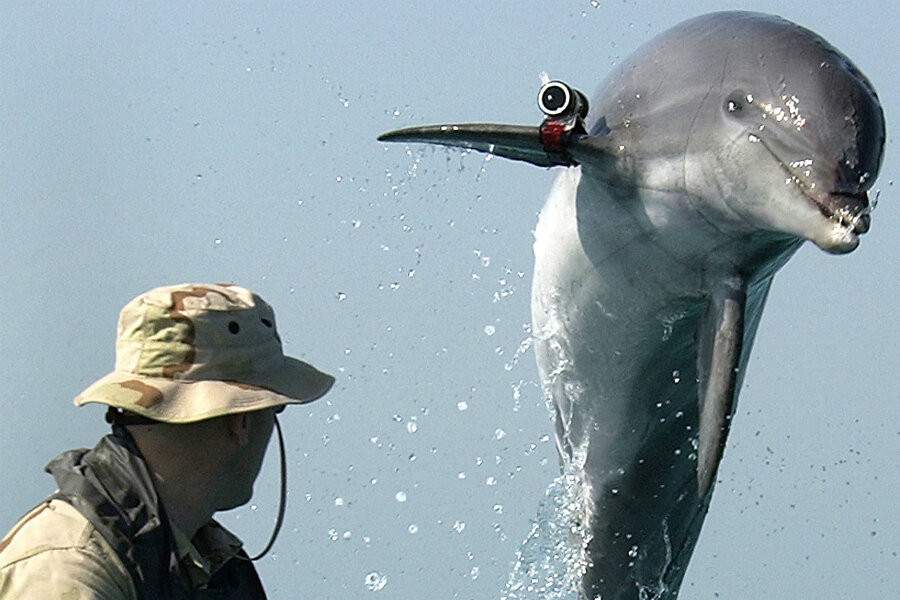Lending a fin: How US Navy dolphins are helping save endangered vaquitas
Loading...
Mexico is trying to save the last of its vaquita porpoises, with the help of international scientists. Now, the US Navy is offering flippers of its own to the effort.
Dolphins trained by the Navy’s Marine Mammal Program for tasks such as sniffing out underwater mines and enemy divers are going to be deployed in the Gulf of California, the only body of water where vaquitas live, in order to locate the last few dozen members of the elusive species – and help capture them.
After locating the rare porpoises, Jim Fallin of the US Navy Space and Naval Warfare Systems Center Pacific told the Associated Press, the dolphins could point the way "by surfacing and returning to the boat from which they were launched."
Their participation, he added, is still in the planning stage, as is the work of the international group they’re joining. But the two primary goals of the mission, expected to start sometime this spring, according to Lorenzo Rojas-Bracho, chairman of the International Committee for the Recovery of the Vaquita, are clear: Figure out how feasible it is to locate and catch the vaquitas, and whether the porpoises can be temporarily housed in the Sea of Cortez, a protected section of the Gulf where they might be able to safely breed.
"At the current rate of loss, the vaquita will likely decline to extinction by 2022 unless the current gill-net ban is maintained and effectively enforced," Mr. Rojas-Bracho wrote, according to the AP.
As The Christian Science Monitor previously reported in May, the vaquita finds itself at the edge of extinction because of Chinese appetites for the totoaba fish. Gill nets used by poachers to trap the totoaba, whose swim bladder is believed to have medicinal value, often trap vaquitas, too.
The Mexican government suspended the use of gill nets in parts of the gulf, and planned to compensate fisherman who discard them. Still vaquita porpoises continue to die, as a totoaba bladder can sell for $5,000 in the United States and double that amount in Asia....
Since 2004, the Mexican government has introduced a number of measures to save the vaquita. It established a refuge in the northern part of the gulf, according to the Marine Mammal Center, a California rescue organization. In April 2015, it pledged $70 million to ban gill net fishing in the upper half of the gulf, and promised to pay fisherman for not using gill nets.
However, most of the 2,700 fisherman are paid only a few hundred dollars for replacing their gill nets, while a few were paid tens of thousands, the Center for Biological Diversity's Alejandro Olivera told the Associated Press. As calls continue for the government to reform this enforcement program, vaquita numbers continue to dwindle.
The catch-and-enclose proposal is a potentially risky one. The vaquita has never been held in captivity, and some experts, including Mexico director of the World Wildlife Fund Omar Vidal, say captivity could end up killing the last remaining members of the species.
"We must strive to save this porpoise where it belongs: in a healthy Upper Gulf of California," he told the AP.
Proponents of the proposal acknowledge the risk, saying the vaquitas’ reaction to the capture should be closely monitored. Barbara Taylor, a conservation biologist at the National Oceanic and Atmospheric Administration's Southwest Fisheries Science Center, told the San Diego Union-Tribune that the operation should be done "in a very careful, staged manner."
"We can't afford to be slow about this," she said. "We have to give this our mightiest effort as quickly as possible."
This report contains material from the Associated Press.






